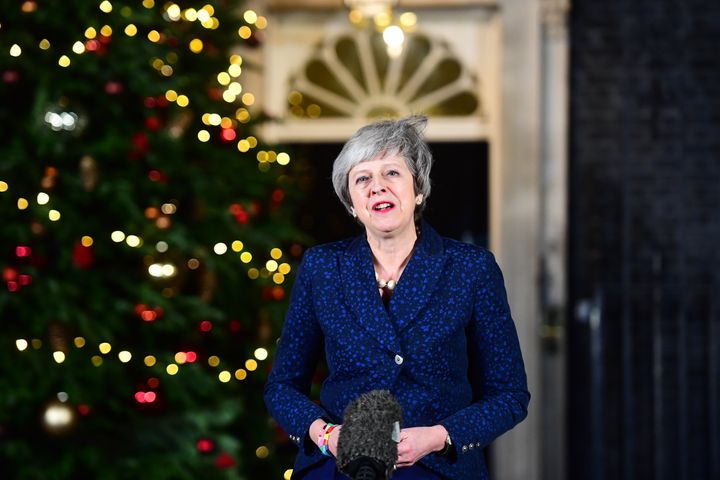
It’s finally happened: after 25 years of tensions simmering away just below the surface, the Conservative Party has now become consumed entirely by its 30-year obsession with Europe. Despite Theresa May’s pyrrhic victory in the leadership challenge this week, this internal battle has rendered this once great bastion of governance – lauded the world over as a fighting-fit, election winning machine – broken beyond repair.
In the last 26 years, The Tories have won just one, slender majority in a general election: their 12-seat majority of 2015. This, remember, against a Labour party that was still being blamed for its long spell in office and (inaccurately) for the Great Recession of 2008. Further, the self-immolation of the Liberal Democrats over tuition fees also played a large part in handing them their majority of 2015.
But really, the rot had set in much earlier than this: the previous time they won a majority was 1992 – again, a small one of 21 – but this was quickly lost over a burning, existential issue to the party: yes, you guessed it: UK membership of the EU. 1992 was the year the EU came to be in its present form, in The Maastricht Treaty, and the Tory party imploded over it: a Eurosceptic wing and pro-European wing cemented around the issue of increasing European integration, and in effect, the Tories have been arguing with themselves ever since.
And whilst they squabbled, Europe and the world around them was transformed: huge geopolitical shifts, like the rise of China, India and other nations, the shifting of manufacture from the UK to elsewhere around the globe, waves of EU expansion, the impact of migration in the age of globalisation: all have represented a generational shift in the political terrain, a shift that also transformed the UK over the same period.
Distracted by their internal civil war, as election performances since have shown, they have made themselves increasingly irrelevant as they obsessed over Britain’s place within the EU, and Britain’s place in a world that was busy adopting to the new realities.
Combine this trajectory with a party membership three quarters of whom are over 45, it is reasonable to ask what must younger generations see when they look to the Conservative party in 2018? They see a party that doesn’t look like them, fighting with itself over an argument that is not theirs; over a debate that they don’t see as a debate at all – a party trying to conserve an imagined gilded British past, a time of glory and Empire, of world domination and leadership that is at risk from EU membership.
But these are such distant ideas and discussions to people born after 1992. Their world has been a world of integration, not isolation; multi- and not unilateralism. These are significant political shifts, but even for young people who might not be aware of politics, the shifts are replicated in their daily lives: the music, food, culture they consume; the make-up of the friends in the playground.
Of course, the transformations and benefits that accrue from these changes have not been equally distributed, and different parts of the UK feel things very differently. But even in the so called ‘left behind’ places, what do the Tories offer? Jacob Rees Mogg, Boris Johnson, Theresa May, and a botched Brexit in the eyes of remainers and leavers alike is not a winning recipe for electoral success.
No doubt, in the next few years at least, the Conservative Party will continue to attract millions of votes – it secured the largest number of votes in 2017. Small c conservatism is an attractive ideology, for many millions of people: a political creed that reassures people that there will not be dramatic change, that tradition, stability, etc. will always garner votes.
But millions of votes are not enough if you cannot secure enough millions to win a majority in Parliament. More important still however is that the introduction of Brexit (via David Cameron and the referendum) and its woeful handling (via Theresa May) have now shorn the party of the only thing that was holding its tattered image together: the central claim of the Conservatives to be the party of stability, tradition and careful pragmatism.
The whole Brexit process, its culmination on the confidence vote this week - which changed nothing of substance in terms of Brexit but merely put the divisions between those who support May and those who don’t on display more clearly than ever - is enough on its own to tear asunder this image of Tory stability.
However, this is compounded by the fact that the idea at the centre of conservatism has been wobbling since 2008 in a more general sense: year on year, it is going to be increasingly difficult to persuade younger voters whether the only political realities they have known as adults – economic instability, higher levels of debt, house prices out of their control, the threat of economic meltdown – are actually worth conserving at all.
To paraphrase a famous Tory of old, it feels like 2019 and the years beyond represent a gathering storm for the Conservative Party. However, unlike Churchill’s day, the likelihood of the emergence of a leader who can save the Party from its fall from grace seems to dwindle by the day.
